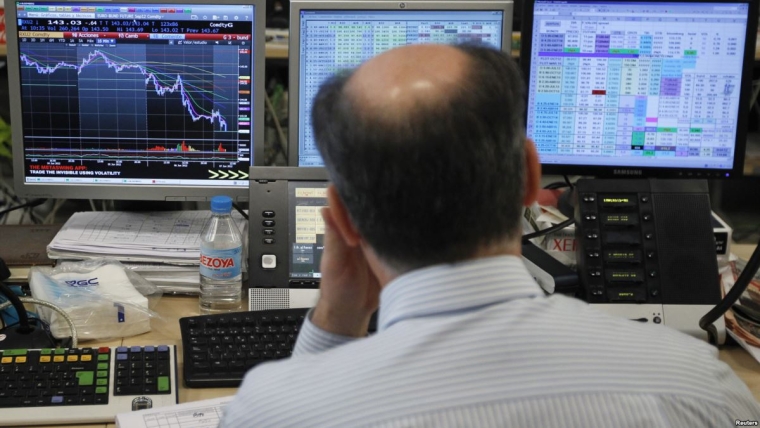
On Friday, US rates pushed lower and the USD showed broadly based weakness after the US employment report, while US equities powered on up. GBP was the best performer after local elections sent a warning message to the Conservatives and Labour to get on with a Brexit deal.
But in breaking news, a couple of hours ago President Trump tweeted that the trade negotiations with China were going “too slowly” and that the 10% tariff rate imposed on $200b of US imports from China would go up to 25% from Friday. This is a shot out of the blue and signals that Trump is not happy with the current state of play and perhaps a sign of frustration over some key sticking points. Negotiations were due to enter their final week this week, but who knows how China will respond. Risk assets will start the week on a poor note and some heightened volatility in financial markets is likely.
The key focus Friday night was the US employment report which showed another month of strong employment growth, while wage inflation was on the softer side of expectations. Headline job growth beat expectations and the unemployment rate fell to a near-50 year low, but underneath the hood the detail was on the soft side – a falling participation rate, negative jobs growth in the household survey, reduced average weekly hours and a steady under-employment rate, to name a few. So there was something for everyone in the report, with equity markets seeing the positive side and taking the S&P500 up 1%, while US Treasuries saw no good reason for the Fed to return to a tightening bias, given the soft underbelly and non-threatening wage figures. US Treasury rates were down 1-2bps across the curve, seeing the 10-year close at 2.525%.
A number of FOMC members spoke at the same conference and gave media interviews. Vice-chair Clarida echoed Chair Powell’s message earlier in the week – a balanced policy outlook tone, with any further adjustments in policy “data dependent”. Fed President Evans, speaking elsewhere, ran the party line on the possibility that some of the recent fall in core inflation might be due to transitory factors, but he added that he saw more downside than upside risks for inflation.
The USD was weak across the board after the employment report, with the key USD indices down 0.3-0.4%. GBP was the top performer, up over 1% to 1.3170. The Conservatives and Labour party both did poorly in local elections, taking their shared vote to 56% (down from 82% in the 2017 general election). PM May and Labour leader Corbyn both agreed that the message from the election was to sort out Brexit. The market took the view that the poor election for both parties gives added incentive to come to an agreement on Brexit when talks resume this week. May looks likely to agree to a customs union, which paves the way for an agreement with Labour, and more upside pressure on GBP.
The NZD closed at about 0.6645, up 0.4% for the day and recovering most its loss for the week, trimmed to 0.2%. All that is academic now, with Trump’s tweet on China tariffs, with the NZD likely to face renewed downward pressure as the week begins.
CFTC data showed increasing net short speculative positioning, a trend seen since the RBNZ’s dovish tilt at the end of March. Positioning isn’t as extreme as we saw during the height of the US-China trade war, but significant enough to trigger a counter-trend rally (depending on how the US-China trade war plays out this week) unless the Bank follows through with a rate cut, or at least projects a lower OCR, at its MPS on Wednesday. In a Bloomberg survey, 13 out of 17 economists expect a 25bps cut to 1.5%. The OIS rate for the meeting closed at 1.6125%, suggesting a 55% chance of a 25bps cut priced into the rates curve.
The NZD was higher on most of the crosses apart from GBP, although not significantly so. NZD/GBP closed the week around 0.5040, the lowest level since October. AUD marked a fresh low of 0.6985 after weak building approval data, but staged a recovery driven by the weaker USD. It closed the week near 0.7020.
Euro area core CPI inflation bounced back by more than expected in April, likely impacted by the late Easter. The market largely ignored the data, with inflation likely to retreat next month. The weaker USD helped EUR recover the 1.12 handle by the week’s close.
US-China trade negotiations will be the focus as the new week begins. We await China’s response. An aggressive response that halts current negotiations, with higher tariffs by the end of the week would be a disaster for risk assets. Even without the US-China war overhanging the market, it was always going to be a pivotal week for the NZ and Australian rates market and the AUD and NZD, with the RBA’s meeting on Tuesday followed a day later by the RBNZ.
Get our daily currency email by signing up here:
Daily exchange rates
Select chart tabs
BNZ Markets research is available here.

We welcome your comments below. If you are not already registered, please register to comment.
Remember we welcome robust, respectful and insightful debate. We don't welcome abusive or defamatory comments and will de-register those repeatedly making such comments. Our current comment policy is here.